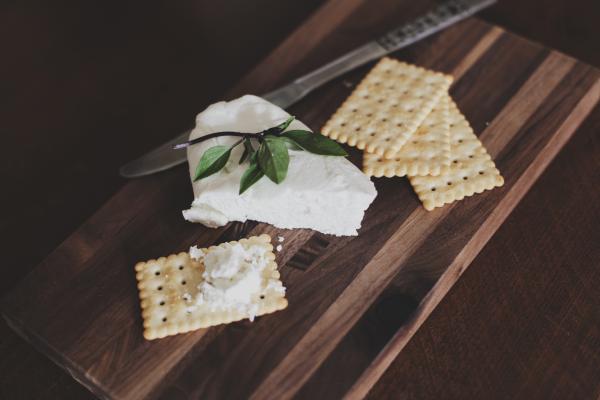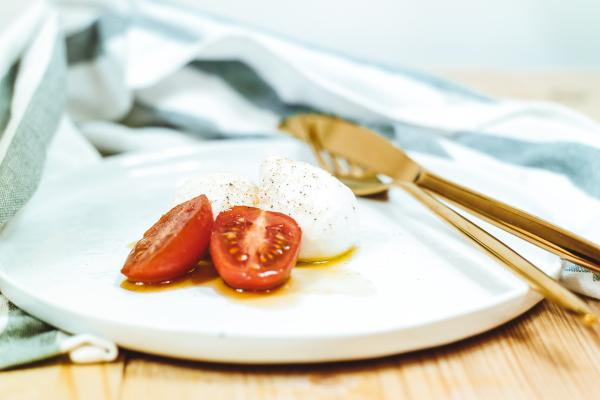How to Make Cheese at Home Without Rennet


Cheese is a staple ingredient in many dishes around the world. Food items made with cheese taste are not only delicious, but are healthy and look great too! There are many different types of cheeses, each with their own taste and texture. When making cheese however, one thing always remains the same, they require rennet. Rennet contains a set of enzymes which produces the separation of milk into a solid curd. Rennet is a type of curdled milk, which is extracted from a calf’s stomach and is therefore not vegan-friendly.
If you love cheese, but are vegan, take a look at this oneHOWTO article on how to make cheese at home without rennet.
What is rennet?
Before we discuss about how to make cheese at home without rennet, let’s have a look at what it is and why people avoid cheese made with this ingredient. Rennet is the main ingredient used for coagulating cheese. Chymosin is a primary enzyme in rennet which is derived from the fourth stomach lining of a new-born calf. The calf carries this enzyme so that it can digest its mother cow’s milk effectively. Rennet can also be taken from the stomach of piglets, also present to aid the digestion process of the animal. Inside the stomach the rennet curdles the milk so that it resides longer in one’s bowel and allows for better absorption.
The absence of chymosin can harm a calf’s health and digestive process. Animal rennet can be expensive and hard to find. Therefore, even if you are not vegan but want to make cheese, learning to make cheese without rennet can prove to be quite useful to you.
How can I make vegetarian rennet?
If you don’t want to use animal rennet to make cheese, you can make vegetarian rennet. It serves the same purpose as normal rennet: to coagulate milk proteins and make cheese. The only difference being that vegetarian rennet originates from microbes or vegetables. Here are a few different ways you can make vegetarian rennet:
- Vegetable rennet: Enzymes can be collected from vegetables and plants and used to make vegetable rennet. Plants from which enzymes can be collected include: fig leaves, safflower, melons and wild thistles.
- Microbial rennet: To make this kind of rennet, enzymes are derived from bacteria or fungi, before being fermented. However, microbial rennet has a bitter taste and is not a commonly preferred option when when making cheese.
- Genetically engineered rennet: Fermentation produced chymosin, otherwise known as FPC, is another type of vegetarian rennet. During its making, a gene is derived from the DNA of a calf and is then mixed with the DNA of: bacteria, mold or yeast. During this process, FPC becomes a GMO product. Most cheeses are made using this type of rennet. This cheese was FDA approved in 1990.

Types of Cheese Made Without Rennet
Here are a few types of cheese that are made without rennet. These cheeses are not long aged and are freshly served soon after their production:
- Cottage cheese: Cottage cheese is coagulated with an acidic ingredient: like vinegar. If you are looking for rennet-free cheese, choose cottage cheese.
- Cream cheese: This is a fresh cheese made without rennet.
- Mozzarella cheese: Stella mozzarella cheese has a soft texture that is perfect for making Panini or pizzas. Frigo cheese also has a perfect mixture of tanginess and saltiness. Both these types of mozzarella cheese are made without rennet.
- Provolone cheese: This cheese is known for its intense flavor and serves as a great addition to warm sandwiches and casseroles.
- Ricotta cheese: Organic ricotta cheese is light, sweet, rich and made with no rennet.

How to make cheese without rennet
If you don’t have access to rennet, can’t afford it or don’t want to use it in your cheese, you can use acids from vinegar or citrus for the as a substitute. Rennet becomes active when it 85 to 140°F of temperature. It is most potent when it reaches 105°F. Once the acidity of milk falls to 4.6 in pH level, and when its temperature increases to 165°F, the mixture suspends and separates into curd.
Follow these steps to achieve the same effect while using citric acid or vinegar:
Ingredients required: milk, fresh lemon juice or distilled vinegar, and salt. The more fat your milk contains, the better cheese quality you will have. But stay away from UHT milk. This kind of milk is sterilized by heating to 280°F, due to which its protein structure is modified and it does not separate.
How to make paneer cheese
Paneer is a mild cheese traditionally used in Indian dishes and does not contain rennet:
- Heat milk in a pan. Do not boil it. Let it foam but don’t allow it to burn.
- Remove from heat.
- Add some lemon juice or vinegar (little at a time).
- Keep stirring the milk while adding vinegar or lemon juice.
- When the right balance is achieved, the milk will start to curdle.
- Leave and let it sit for 10-15 minutes. During this time, it will separate completely.
- Use a cheesecloth laid in a sieve or colander to strain the curds.
- Squeeze any excess liquid out.
- Lay the cheesecloth flat, sprinkle some salt in it, wrap the cheesecloth and make a tight bundle with it.
- Press the bundle in between two plates.
- Leave for an hour to let it dry. And voilà, it is ready to be enjoyed! This kind of cheese does not require any aging, and is good to consume immediately.
How to make queso fresco
This is a Latin-American type of paneer that can be made by adding distilled vinegar in warm milk gradually. Most people prefer using vinegar, because lemon juice adds a tangy flavor to the cheese which they may not like.
Making cottage cheese
Cottage cheese is made by draining but not pressing cheese. You can make it at home by heating up buttermilk and milk with salt. Buttermilk is acidic as it is fermented. When you heat buttermilk, the milk will separated into curds. The fattier the buttermilk, the higher temperature it will need to curdle.
Making mascarpone
Mascarpone resembles cream and it is a main ingredient used when making tiramisu. You will need to use lemon juice and a heavier or whipping cream to make this kind of cheese. Because it has high fat content, you may need to increase the temperature to as high as 190°F. The liquid will not separate as cleanly as milk would. You don’t however need to squeeze this cheese, as it normally carries a custard-like consistency.

How to make homemade mozzarella without rennet
- Warm 2L of non-pasteurized/unboiled milk on a low flame. Stir continuously.
- Add 4 tbsp of white vinegar or lemon juice to split the milk.
- Curds should start to form in the milk. If you do not see enough curds, you might need to add 1 tbsp more of vinegar.
- Continuously and slowly gather all the curds into a cheese ball.
- Take the cheese ball you have formed out and remove the excess water from it. Now the cheese has to be put into hot water, you can use the leftover water for this.
- Microwave the water until it is hot and then place the cheese ball inside. Keep mixing.
- You have to keep the cheese in this water for 5-6 mins. After that use your hands to squeeze out all the extra water from the cheese.
- Now put it back in the water, take it out and again remove the extra water from it by squeezing it with your hands. You will repeat this process 2 or 3 times.
- Once we've done that, we will soak the cheese ball in ice-cold water for 1 or 2 mins. We recommend you use tap water and ice cubes as we want the water to be very cold.
- Take the cheese ball out, take out the excess water, dip it in again and repeat the process 2-3 times. Finally squeeze all excess water out.
- Wrap the cheese in plastic foil and freeze it so it is easy to grate. And then, you are finally done!
If you want to read similar articles to How to Make Cheese at Home Without Rennet, we recommend you visit our Recipes category.








